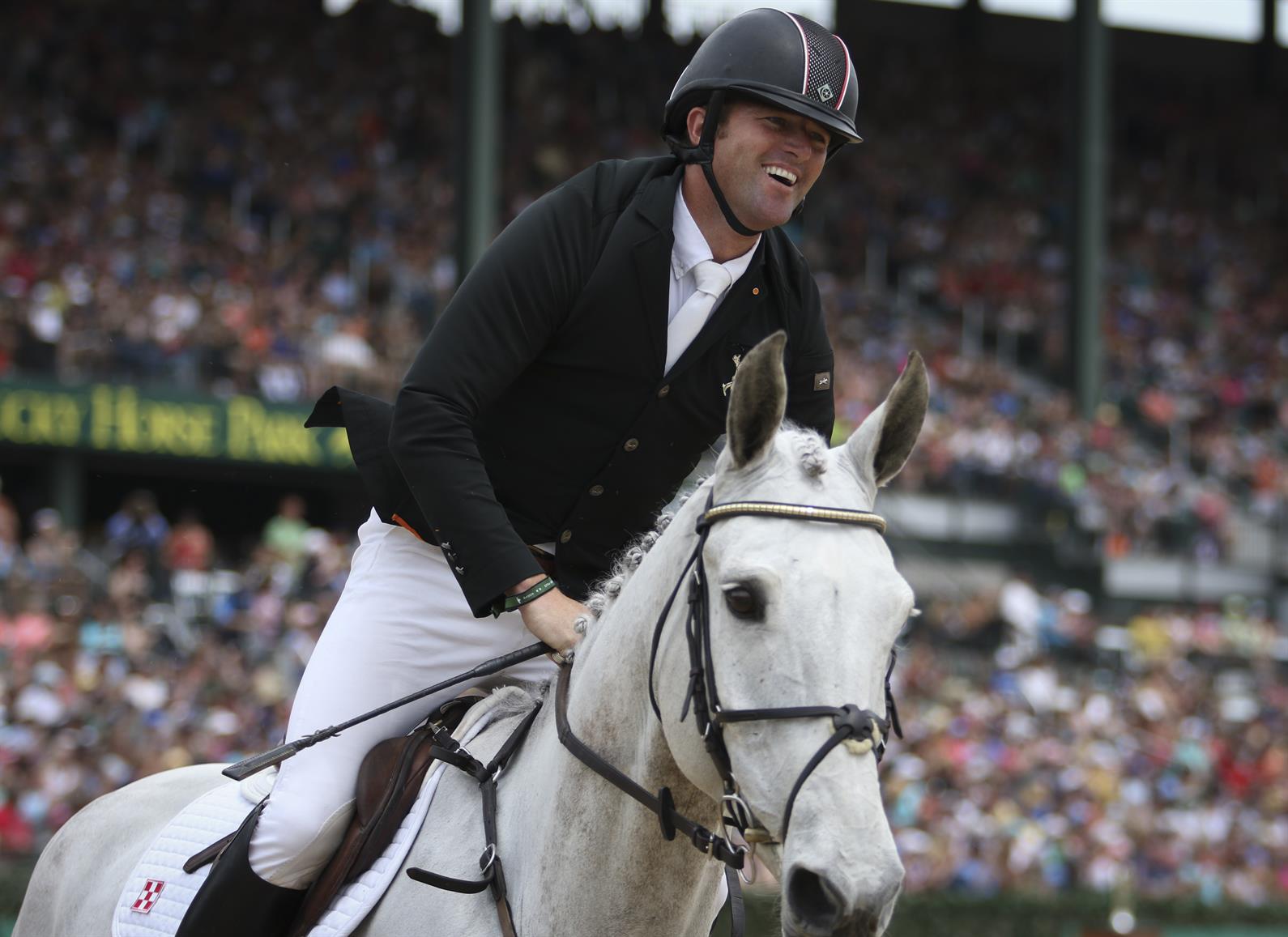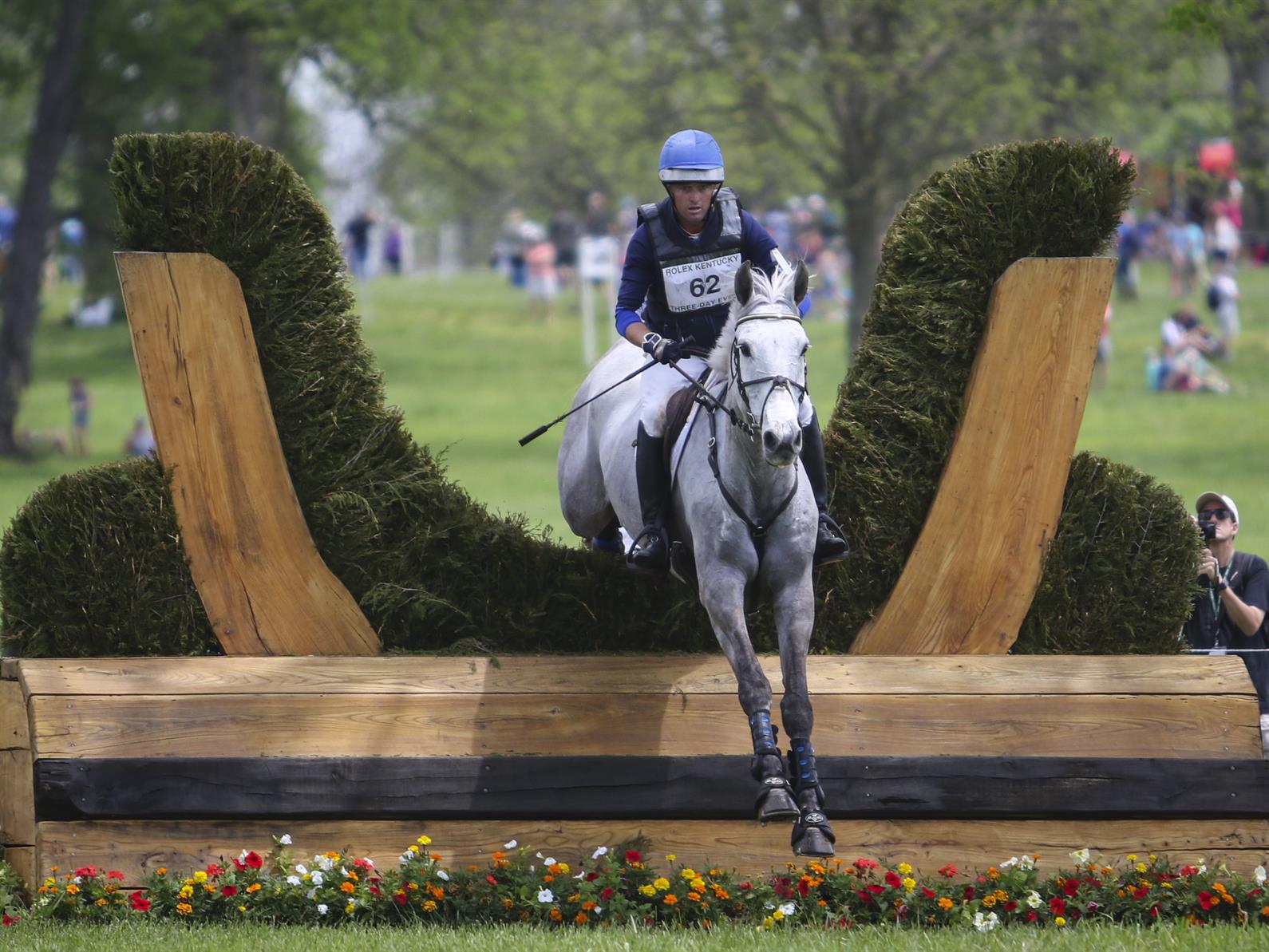International eventing athlete Will Faudree made his Kentucky Three-Day Event debut in 2003 with Antigua and has ridden there numerous times since then, most recently in 2017 on Pfun. Last year’s event was a remarkable comeback for Faudree, who was returning to four-star competition after sustaining a broken neck two years earlier.

Photo: Taylor Pence
In addition to riding at Kentucky, Faudree’s career highlights include a team gold at the 2003 Pan American Games at Fair Hill, serving as the traveling reserve on the 2004 Athens Olympic team, and competing on the 2006 FEI World Equestrian Games™ eventing team. He also was short-listed for the 2010 WEG and the 2012 Olympic Games in London.
“I’m obsessed with teaching horses new things, seeing them succeed, and being part of their careers,” said Faudree, who is based at Gavilan Farm near Southern Pines, N.C. “The passion and sense of accomplishment, the sense of partnership I have with the horses, it’s something you can’t explain in words. It’s a bond that anyone—professional, amateur, kids—can experience, but it’s hard to explain.”
In his many trips to the Kentucky Three-Day Event, Faudree has been both student and teacher during the testing cross-country phase, from his first gallop around Kentucky’s sweeping cross-country course aboard the experienced Antigua to bringing along Pawlow for that horse’s four-star debut in 2010. That’s given Faudree a lot of insight into what horses and humans both can learn from their journey along the event’s galloping lanes—insights he’ll be sharing there this year as a coach. We asked Faudree to give us a glimpse into what riding Kentucky’s iconic cross-country is like, to share some of his favorite memories, and to explain what horse and rider can gain from the experience.
Do you remember your first impression of the Kentucky cross-country course back in 2003?
“That first year with Antigua, I didn’t really know what to expect. I was a kid who’d never been to a four-star. I hadn’t even been to Kentucky to watch. I’d done the Foxhall three-star the year before, and I’d done the Fair Hill three-star, but I didn’t know what I was going to see when I got to Kentucky. I remember walking the cross-country course and thinking it was unjumpable. That was my first memory of it: being overwhelmed at the actual magnitude of what the event is, from the dressage to the cross-country to the show jumping.”
What does it take to get around that course?
“You have to have talent and skill and guts to leave the start box at a four-star. It’s a big deal. I don’t care how much you spend on a horse or how much a horse has done. You have to be able to present the jumps to the horse so that the horse can understand them.”
What advice do you have for a rider who’s facing the Kentucky cross-country course for the first time?
“It’s going to be big, it’s going to be long, and it’s going to be difficult. Keep going. It’s going to be the hardest thing you’ve done. And at minute nine or 10, you’re going to have a horse that you’ve never felt before. Keep going.”

Photo: Shannon Brinkman
What are some of your most enduring memories of riding cross-country at Kentucky? And what do you feel you learned?
“Every time I did Kentucky on Antigua, I always felt that I was being taught by this master how to run around a course like that. In my entire career with that horse, I can’t tell you that I taught him anything. But he taught me everything I know.
“Pawlow was the first horse I’d ever produced to that level. At that point I was established enough at my career and had been to the Olympics and to the World Equestrian Games, so I understood the magnitude of events like that. It’s pretty special when you go to an event of that caliber with a horse that you’ve produced yourself. There’s a sense of pride: ‘I’ve gotten this horse here.’ And that horse, in particular, was pretty special because I’d been told by a number of people, ‘This horse is not going to be a four-star horse.’
“So to then take a horse like him that I’d produced to that level, there was a sense of accomplishment that I’d taken what I learned from one horse and taught that to another horse. That’s one great thing about having a career in this sport: you get to learn from every horse you sit on.”
And then there was your comeback last year with Pfun.

Photo: Taylor Pence
“Last year on Pfun was a really amazing moment for me, and probably one of the biggest accomplishments in my career to date, having broken my neck in 2015. I had competed in 2016 and competed to the three-star level, not knowing if I would ever get back to the four-star level.
“After you have serious injury like I had, you lie there wondering if you’re going to come back and if you are you going to have the nerve to do it. When I finished cross-country on Pfun, it wasn’t so much a sense that I had done it, but that I had come back. It’s hard to explain, but that was the feeling. I’m grateful every time I finish a cross-country track, whether it’s at Kentucky or at a beginner novice horse trial. I want my horse to finish better educated than when they started.
“But that time on Pfun, I also had overcome something. I had answered the question of would I ever be able to do it again, more mentally than physically. Because you don’t know. I can get very nervous going down to the start box, but once you’re in that zone and they start counting you down at Kentucky, you’re pretty focused. When they say, ‘Go,’ I’m in my game. I know what I’m doing then. It’s the 72-hour period before they say go when you’re visualizing every second of the day and what you’re going to be doing over every jump! So last year, for me, it was whether I could face those nerves head on and produce the performance. I didn’t know whether I could until I was circling the start box at Kentucky again. Finishing that year was pretty awesome.”
When you’re out there on course, what are you aware of and what details do you notice?
“There are weird things I’ll remember when I finish cross-country. Last year I remember galloping up out of the Head of the Lake and up the hill to jump the whiskey barrels. To get there, we galloped past an old oxer in the woods that I remembered jumping on Antigua and also on Pawlow, and when we galloped past it Iast year I just remember patting Pfun and thinking, ‘Your brothers jumped that one,’ and just encouraging him to keep going.
“I’m aware of the communication I have with the horse on the way to each jump. And when the opportunity presents itself, like on a long gallop stretch, there’s a minute when you can take a deep breath and feel where you are on your horse. How is your horse breathing? Has he taken a deep breath? How much do you have left in the tank? You’re constantly checking all of that. … There’s an intense awareness of your horse the whole time.”
What are some of the things a rider can learn from the Kentucky cross-country track?

Photo: Shannon Brinkman
“I got an education on Antigua that has given me the career I have now. If I had to pick one thing I walked away from Kentucky with in my first year there, it would be that it takes two. I couldn’t just rely on him to jump around a track that big. There were jumps on that track that I didn’t present to him correctly, and he bailed me out. But I walked away from that cross-country course thinking, ‘This is a two-way street. I’ve got to be there for the horse and give the horse everything they need to answer the question.’
“I also learned to have a plan A, a plan B, and plans C, D, E, and F! Because anything can change. You don’t know how the horse is going to react to the crowd or the atmosphere.
“In the number of times that I’ve done Kentucky, I can’t really describe the feeling of what it’s like to gallop to the Head of the Lake. I’ve done it enough times now, I think I’ve jumped into the Head of the Lake from every direction. You walk the course so many times, and then all of a sudden you’re galloping toward it, and all you see is a sea of people. And when you gallop down into the bowl of where the Head of the Lake is, all of a sudden you see the jumps. You don’t get a long approach.
“Thinking back to last year with Pfun, there were five jumps there that happened very, very quickly. Something I learned on Antigua is that when you enter into that zone of jumps, you have to be able to think in slow motion. You have to be able to go as fast as you can to get there, then hit slow motion so you can give the horse every amount of knowledge he’s going to need—the balance, the rhythm, the speed, the direction—so that he can answer the question you’re about to present to him. And then get away from the jump as quickly as you can.”
How do you think you’ve changed between your first year with Antigua and 2017 with Pfun?
“When I was in my 20s and early 30s, it was, ‘Oh, my God, I have to do this or my life is over.’ I had to jump around Kentucky in 2004, because I had to go to the Athens Olympics. I had to jump around in 2006 and show jump clear, because I had to make the World Equestrian Games that year. Luckily for me, that happened. But looking back, if it doesn’t happen, it doesn’t mean my career is over—it just would have gone in a different direction. …
“It’s not that I don’t want to make teams or go places; I want to go to the 2020 Tokyo Olympics as much as anyone and win medals! But I don’t want to go to say I’m an Olympian. I want to go because I’ve prepared my horse to be competitive on the world stage. I’m not going to forsake my horse’s wellbeing and training in order to meet a deadline if it’s not meant to be.
“Whether you’re at Kentucky on an experienced horse or one that you’ve produced, whether you’re there on a horse you’re getting experience on or you’re experienced already and going to be competitive and maybe win, the event has such magnitude. It’s special. Just the sheer pride and possibility of jumping around a track like that is a dream in itself.
“Everybody has their own expectations when they go to a big event like that, and it’s very easy as a professional to get caught up in trying to make teams and trying to win or get the prize money. But it took me breaking my neck to realize just the sheer passion of why I do the sport. It brings a whole new sense of success when you cross the finish line and look at it through those glasses. Instead of thinking, ‘This is all for my career,’ now it’s ‘This is for the love of the game.’”

